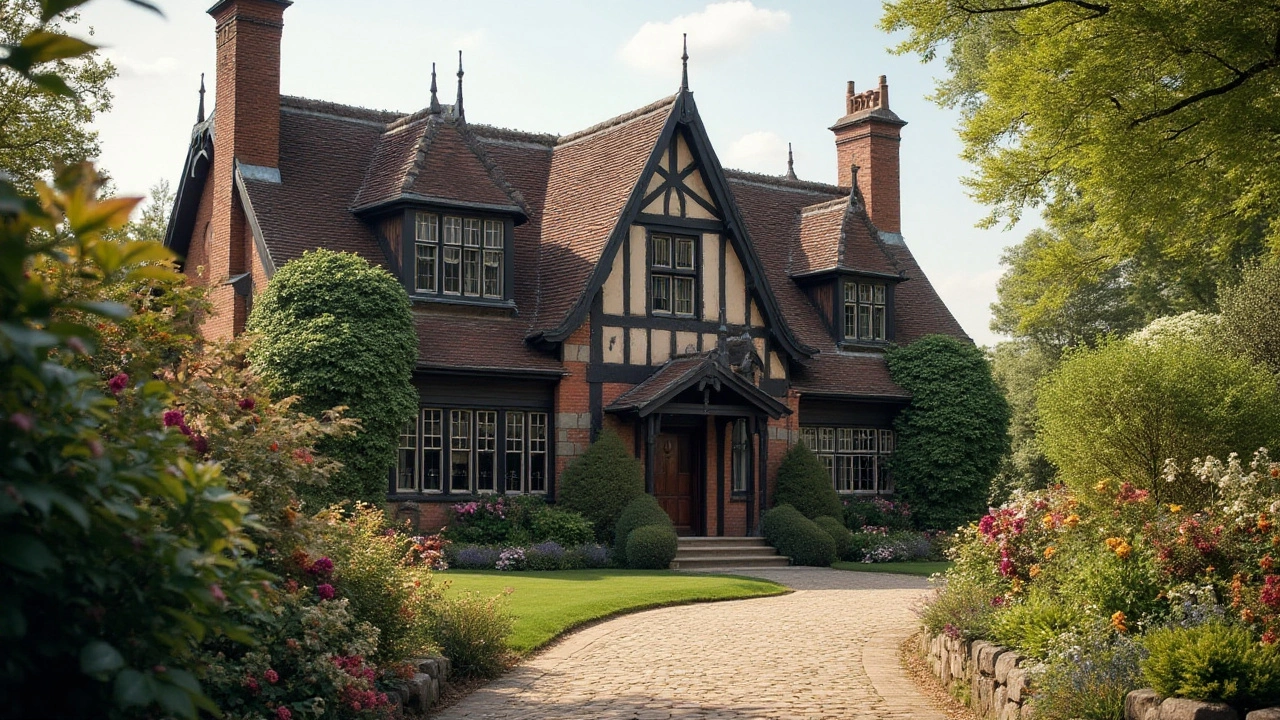Dutch Colonial Revival architecture brings timeless elegance and practicality to homes, characterized by its distinct gambrel roofs, symmetrical facades, and charming dormers. Emerging in the early 20th century, this style is a nod to the original Dutch Colonial homes of the 17th and 18th centuries. It became popular in the United States, especially in residential neighborhoods, for its unique blend of tradition and modern-day comfort. Intricate woodwork, substantial use of brick and stone, and ample light are some key features that enthusiasts and designers cherish today.
Architecture Style: A Practical Guide to Spotting and Understanding Styles
Buildings wear their history on the outside. Learn a few clear visual clues and you can tell who built a place, when it was built, and what ideas shaped it. This page collects short, practical notes on common architecture styles and points to detailed articles where you can learn more.
What do we mean by "style"? It’s the set of recurring features architects and builders use: roof shapes, window types, materials, decorative details, and proportions. Style also reflects technology and culture—brick and timber point to different eras than steel and glass. Keep this simple checklist in your head: materials, proportion, ornament, structure, and scale.
Common styles to recognize
Colonial and Georgian buildings favor symmetry, central doors, sash windows, and brick or wood clapboard. Greek Revival stands out with big columns and pediments, like a small temple. Beaux-Arts wears grand staircases, heavy stone, and carved details meant to impress. Renaissance and Baroque use classical orders and dramatic curves; Renaissance feels balanced, Baroque goes theatrical. Gothic gives pointed arches and ribbed vaults; look for tall vertical lines and stone tracery. Modern families—Bauhaus, International, and High-Tech—use clean lines, flat roofs, open plans, and exposed structure; materials are concrete, steel, and glass. Mid-Century Modern blends clean geometry with warm wood and sliding glass doors for indoor-outdoor living. Postmodern mixes past styles with playful color and ornament. Neo-Futurism and Expressionist buildings push sculptural shapes and new materials. Constructivist work from the early 20th century looks geometric, bold, and machine-like. Mediterranean and Ranch types favor low profiles, tiled roofs, arched openings, and outdoor living. American Craftsman focuses on handcrafted woodwork, tapered columns, and built-in furniture.
How to spot a style in the real world
Start with the roof and windows. Rooflines and window shapes are quick signals. Check materials—stone, brick, stucco, glass tell a big part of the story. Look at details: columns, moldings, cornices, balustrades. Scale matters: civic buildings tend to be monumental, homes are human scale. Also note the context—city boulevards and planned squares often show Beaux-Arts or Neoclassical ideas, while suburbs reveal Ranch and Mid-Century modern patterns. Use a camera: take a few photos and compare them to reference images.
Want to dig deeper? Use the article links on this tag page to read full guides on Colonial, Renaissance, Beaux-Arts, Greek Revival, Modern movements, and more. Each article gives origin, key features, and real examples so you can practice spotting styles on walks or travels.
Try this quick exercise: pick one street corner and spend ten minutes noting five features—roof, windows, door, material, and ornament. Match those features to an article here and read a short guide. Over time you’ll spot patterns without thinking. Preservation matters too: knowing style helps you argue for saving a building or guide a sensitive renovation. If you’re working on a project, save photos of original details and share them with a contractor or conservator.
Keep exploring — each style tells a clear, useful story. Start today now.

